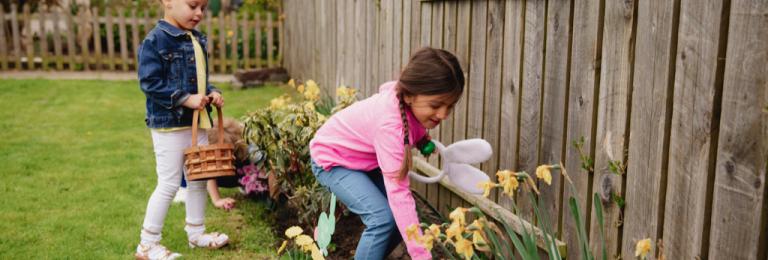Treasure Hunt
Children love to search for treasure of all kind. At Easter, it can be common to hunt for chocolate eggs, jelly beans or other candies. Rather than focus on the sweets, consider setting up a hunt for healthier items. With children of different ages and abilities, consider a rule that asks everyone to pool their findings to be distributed evenly so the older kids don’t find everything first before the younger ones.
Things to hide:
- Use hinged, plastic eggs to put smaller non-edible items in like stickers, temporary tattoos or craft supplies like pom poms. It’s not recommended to put food in these eggs as the plastic quality is not food-safe. Save the plastic eggs for next year to reduce the impact on the environment.
- Hard-boiled, painted eggs (keep them refrigerated until just before the hunt). Be sure to use baskets or bags to collect them so they don’t get dropped and broken.
- Flower blossoms or paper flowers that can be used in a craft afterwards.
- Fruit that comes in a peel like citrus fruit (e.g. oranges, mandarins, grapefruit), bananas, kiwi, mango, lychee or dragon fruit. After they are all found, wash the fruit and make a fruit salad to share! It is not recommended to hide fruit that doesn’t get peeled (e.g. berries) because they might collect dirt from the hiding spot or children’s hands and they’re easier to smush. Food should not be hidden in any areas that could be contaminated with animal feces (pets, wild animals, rodents).
- Cereal—create little bundles (e.g. decorated paper bags) of whole grain cereal like O’s or shredded wheat. Have children wash their hands after the hunt and before eating their bundle of cereal. For children over 4, you could also hide small bags of popcorn, seeds or dried fruit—for children 4 and under, these foods could be choking hazards.
